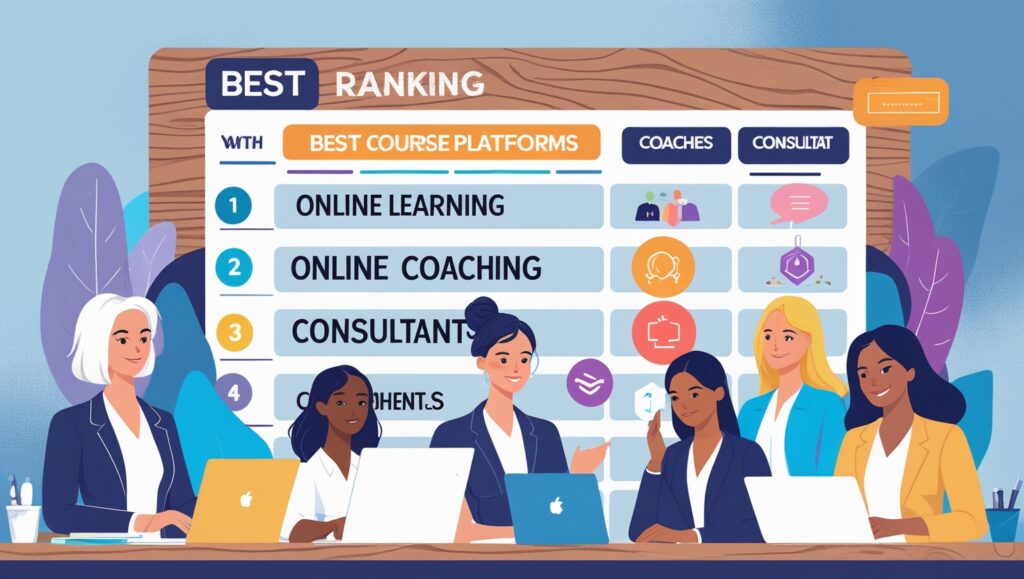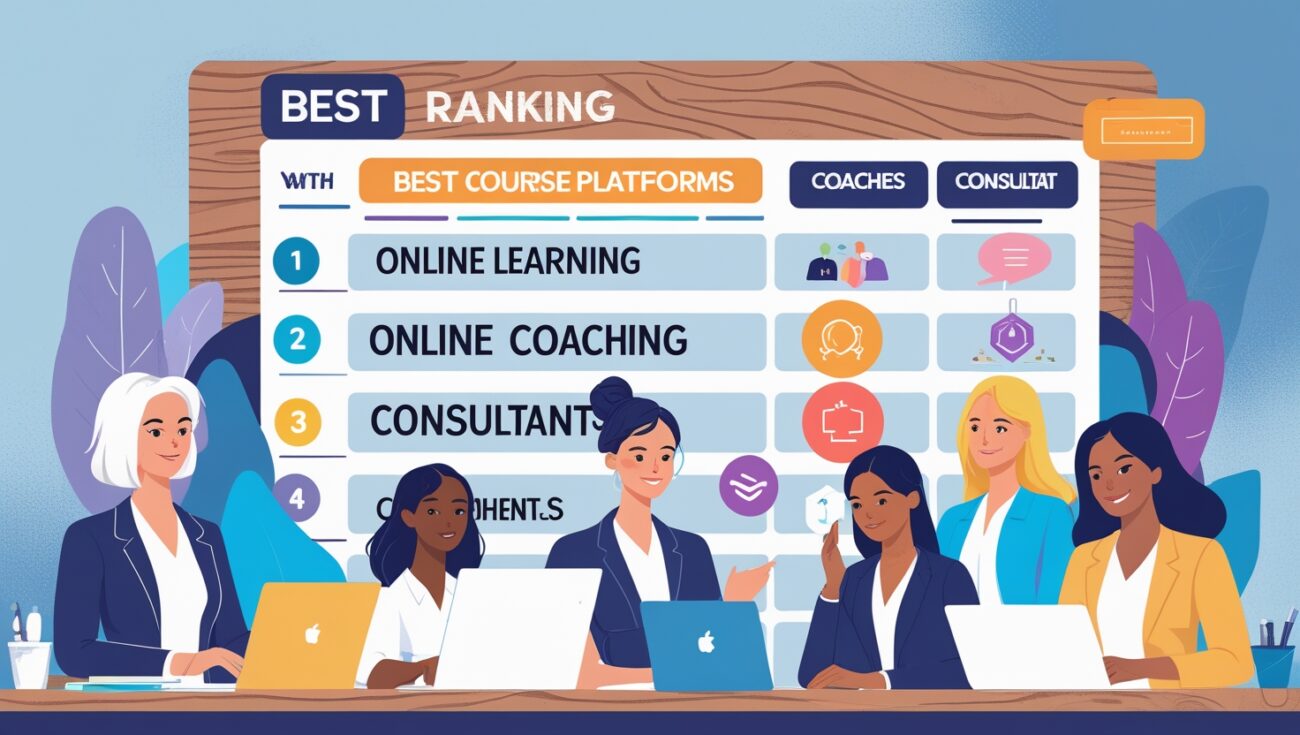Best Course Platforms for Coaches and Consultants (Ranked)
As a coach or consultant, picking the right course platform can make or break your business. I’ve personally tested nearly every major platform out there, from Kajabi to Teachable to Skool. After wasting money, time, and energy on overcomplicated tools, I finally figured out what actually works — and what just looks good in marketing.
In this post, I’ll walk you through the best course platforms for coaches and consultants, ranked from my own experience, not just random specs. If you want to launch your offers without tech headaches and actually get paid consistently, keep reading.
And yes — I’ll show you the #1 tool I now use daily to run my entire coaching and course business. (Spoiler: it’s Skool, and here’s my referral link if you’re curious.)

Table of Contents
1. Skool — Best All-in-One Platform for Community & Courses
I switched to Skool after years of bouncing between clunky setups. It’s honestly the only tool I’ve stuck with. Why? Because it gives me everything I need in one dashboard:
- Online course hosting with a super clean “classroom” experience
- Built-in community so I don’t have to use Facebook Groups
- Calendar for events or live calls
- Gamification system to boost member engagement
- Direct Stripe integration so I get paid fast
What I love most is that it’s simple and distraction-free. My members actually use it — and they stay.
2. Kajabi — Powerful, But Overkill for Most Coaches
Kajabi is a beast. It has landing pages, pipelines, email marketing, automations, and more. But here’s my issue: you’re paying premium pricing for features you may never use.
If you’re just starting out, Kajabi can feel overwhelming. The learning curve is steep, and unless you already have an audience, it’s hard to justify $149–$199/month right out of the gate.
For established businesses with a team, sure — Kajabi can work. But for solo coaches? You’ll probably spend more time setting it up than actually serving clients.
3. Teachable — Good for Courses, Weak for Community
Teachable was one of the first platforms I used when I launched my courses. It’s solid. The dashboard is clean, course creation is easy, and payments are reliable.
But the big problem is that there’s no real community feature. As a coach, building relationships is key — and Teachable feels like a one-way street. You upload content, and that’s it. There’s little to no back-and-forth.
If you’re only selling standalone courses, Teachable might work. But if you want real engagement and retention, it falls short.
4. Thinkific — Decent Alternative, Limited Flexibility
Thinkific is another course-first platform. It’s similar to Teachable in many ways but offers a bit more customization if you’re tech-savvy. I used it briefly for a group coaching program.
It worked — but again, it lacked the community aspect I needed. And while it gives you more design control, the user experience still feels a bit cold. If you want simple, warm, and highly interactive? Thinkific may not be the best fit.
5. Circle — Great for Community, But Lacks Native Course Hosting
I like Circle — especially the design and community tools. It feels modern and intuitive. But the biggest issue is that you still need another platform to host your actual course.
That means paying for Circle AND something like Teachable or Gumroad. It adds complexity — and bills. For coaches trying to keep things streamlined, that’s a dealbreaker for me.
If you already have your course hosted elsewhere and just want a sleek community space, Circle could work. But for all-in-one? Not quite.
Final Verdict: Skool Is What I Use Daily
After trying all these tools, I landed on Skool because it removed the clutter. I didn’t need funnels, email sequences, or a dozen apps. I just needed:
- A course space
- A coaching calendar
- A community to engage members
- A payment processor
Skool checked all those boxes — and I’ve been growing my membership ever since.
Start your own Skool group here
What really made me stick with Skool was the member experience. People log in and immediately know where to go — they can click “Classroom” to watch the lessons, “Community” to ask questions, and “Calendar” to RSVP to calls. It’s clean, intuitive, and doesn’t overwhelm anyone.
I also love that there’s no mobile app fatigue. Skool works beautifully on mobile browsers. My members don’t have to download yet another app just to access content. That reduced friction and led to higher participation, especially from busy professionals.
One thing Kajabi never gave me was actual organic interaction. Most people signed in to watch content, but that was it. With Skool, members help each other daily, and that naturally builds retention. I barely have to remind people to stay subscribed — they do it on their own.
I run weekly group coaching sessions, and Skool makes it easy to keep everyone on the same page. I drop the Zoom link in the calendar, and members get reminders. No emails, no confusion, just simple structure.
Another key advantage is the built-in gamification. Members level up based on how engaged they are. It sounds simple, but it works. People naturally want to contribute more when they see their name rise on the leaderboard.
From an admin side, I’ve found the analytics inside Skool to be just right. I don’t need 20 charts and graphs. I want to know who’s watching lessons, who’s active, and who’s not. That helps me reach out or tailor my support better.
And the Stripe integration is a dream. No Zapier. No PayPal delays. I connected my Stripe account in minutes, and now I get paid fast, directly, and reliably. That made me trust the platform more than anything else.
I’ve had fellow coaches ask me if Skool is “too basic,” and my answer is always the same: it’s only basic if you don’t know how to use it well. When you structure your content and your community with intention, it becomes a powerful revenue generator.
Some of my peers are still stuck in decision paralysis — trying to choose between WordPress plugins, custom apps, and Frankenstein funnels. I used to be there too. But now I focus on results, not complexity, and Skool gives me that edge.
The reality is, you don’t need all the bells and whistles. You need something you’ll actually use — and that your clients will understand immediately. That’s why Skool wins in my book every time.
If you’re on the fence, my advice is simple: don’t wait. Set up a simple offer, build your first group, and grow from there. You’ll learn more by doing than by comparing tool features all day.
Click here to start with Skool — it’s what I use daily, and I wouldn’t go back.







One thought on “Best Course Platforms for Coaches and Consultants (Ranked)”